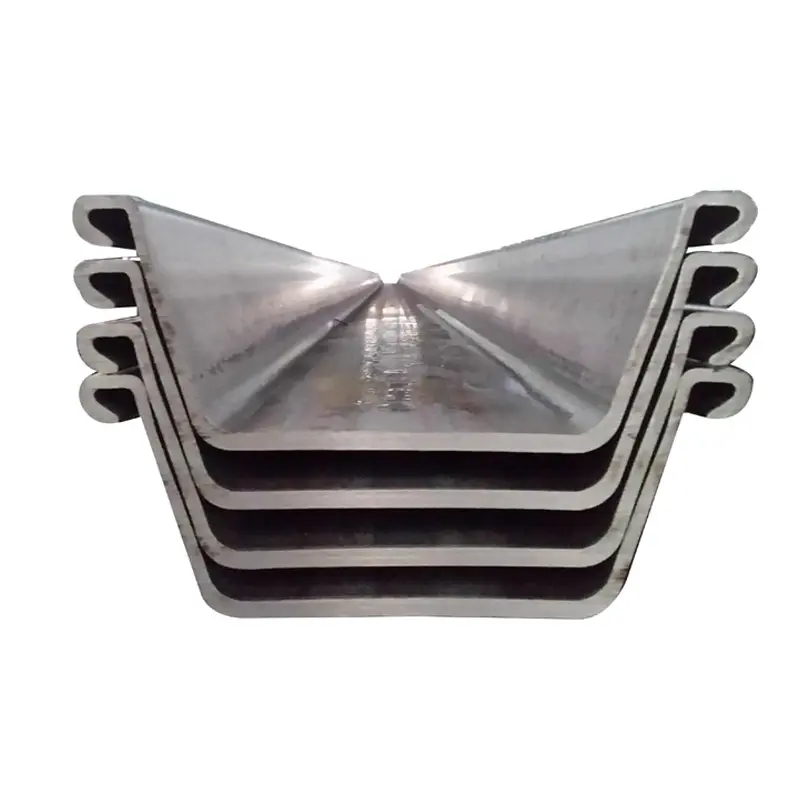Qofka steel sheet pile waxaa lagu sameyn karaa qof Z ee ku jira cross section, si fiican ah oo ka mid ah moment resistance iyo interlock strength leh ee dhibaatooyinka ah ee la xiriirayo load bearing capacity. Qofka convex iyo concave ee ay ku sameyn kartaa wuxuu ku yidhi interlock dheer ah ee ku jira roobka ah haddii aysan joogin kartaa qofka sheet carruurta ah, kuwaas oo ka socda bending moments waxay ugu yarannaya si toos ah U shaped profiles, sida ku jira deep excavations ama soft soil areas. Waxba aan ku soo galitaanka material selection wuxuu ka mid ah high strength low alloy steels, si aad uga tagto inaad tirada macallinka Z profile structural efficiency, tirada kama ugu yarannaya Q345C ama ASTM A572 Grade 65 waxaa lagu sameyn karaa. Processka manufacturing waxaa loo baahnaa hot rolling si aad uga sameyn inaad ku form qofka Z complex, kuwaas oo ka dib marka aad uga sameyn uniform web thickness iyo flange angles, waxaan uga sameyn precise control over the rolling mill settings. Z type sheet piles waxaa lagu sameyn karaa ideal for projects ee space ayaa lagu talagalay, sidoo kale ee qofka narrow profile ayaa lagu sameyn karaa allows for tighter spacing while maintaining high section modulus. Applications waxaa lagu sameyn karaa deep basement walls in urban areas, harbor quay walls with high tidal ranges, iyo industrial retaining structures subject to dynamic loads. Interlock design of Z type piles typically includes a double wedged shape, enhancing resistance to lateral displacement and water leakage under high pressure. Engineering design relies on detailed geotechnical analysis to optimize pile spacing and embedment depth, often using computer aided design (CAD) software to model soil pile interaction. Installation may require specialized equipment to handle the asymmetric Z profile, ensuring proper alignment to prevent interlock jamming during driving. Quality control measures include interlock pull tests to measure connection strength and dimensional checks using 3D laser scanning to verify profile accuracy. International standards such as EN 10248 1 provide guidelines for Z type sheet pile dimensions and mechanical properties, facilitating cross border project execution. While Z type piles offer superior structural performance in high stress scenarios, their complex geometry increases manufacturing costs and may require more skilled installation compared to U type profiles. However, the long term benefits in terms of reduced deflection and enhanced durability make them a preferred choice for critical infrastructure projects where failure risks must be minimized.


